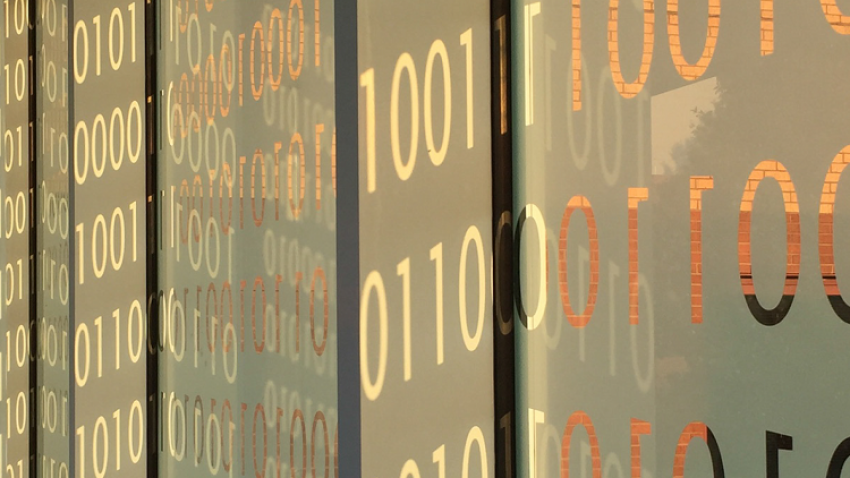
Herrmann Honored with 2020 SEG Reginald Fessenden Award
Felix Herrmann is the recipient of the 2020 Reginald Fessenden Award, presented by the Society of Exploration Geophysicists (SEG). He is receiving this award with Charles (Chuck) Mosher, of ConocoPhillips, which recognizes their pioneering work in the development and application of compressive sensing (CS) in seismology.
Borrowing from electrical engineering and mathematics, they have shown how new theories can be utilized to efficiently acquire higher quality seismic surveys at costs much lower than that afforded by traditional methods. These two award winners did not directly work together, but they both benefitted from each other’s contributions and set an exemplary example of how technical success can be achieved by the interaction between academia and industry. Their efforts are establishing the new paradigm for seismic acquisition, and their innovations are deserving of this prestigious award.
Such concepts as sampling interval and aliasing have been well established, but these concepts are based on regularly discretizing a continuous signal. Irregular sampling allows CS to avoid the traditional Nyquist criteria of sampling two points per wavelength to eliminate aliasing. This opens the possibility for sparser sampling while maintaining or enhancing bandwidth and managing incoherently aliased energy. This is the basic premise of CS, but there are significant hurdles in implementing any new approach for effective use in the field. Questions such as how to acquire irregularly sampled field data, represent it in a compressed form, deblend simultaneous sources, and perform a sparse inversion to reconstruct the desired output data are among the key challenges Herrmann and Mosher have addressed successfully.
Herrmann joined the Georgia Tech faculty in 2017 as a professor in the Georgia Tech School of Earth and Atmospheric Sciences and as a Georgia Research Alliance Eminent Scholar in Energy. He holds joint appointments in the School of Electrical and Computer Engineering and the School of Computational Science and Engineering. While a professor at the University of British Columbia, Herrmann led the industry-supported SINBAD consortium from 2005-2017. The focus of this consortium was on applications of CS for cost reduction of seismic acquisition, seismic processing, and seismic imaging. Herrmann and his colleagues addressed sampling-related cost of seismic acquisition by using CS wavefield reconstruction methods based on randomized sampling techniques and simultaneous shooting in land and marine acquisitions.
Through several publications, he and his team demonstrated that a signal can be represented sparsely, interference (aliasing) can be rendered into incoherent noise by random sampling, and a nontraditional optimization algorithm can recover the desired signal from the sparse representation. Key areas in which Herrmann has contributed are: seismic data processing, wave equation imaging, and full-waveform inversion (FWI). In seismic processing, he has shown that multidimensional data can either be sparsely represented using a curvelet transform or in low-rank factored form. Given these structured representations, Herrmann demonstrated how seismic wavefields can be reconstructed from severe undersamplings by promoting structure via optimization. He showed how to represent primary reflections with a sparse spike inversion, which also draws on new techniques from modern convex optimization. In wave equation imaging, he has shown how statistical sampling of shots, in combination with curvelet-domain sparsity promotion, can yield impressive cost reductions of reverse time migration and FWI. He and his team also were responsible for the development of wavefield reconstruction inversion, a new technique designed to mitigate the impact of local minima. Finally, he was selected as the SEG 2019 first-quarter/second-quarter Distinguished Lecturer to present “Sometimes it pays to be cheap — Compressive time-lapse seismic data acquisition,” which focuses on obtaining repeatable time-lapse data without insisting on replication in the field.
Mosher and his team at ConocoPhillips have also made significant advances that are currently realizing the potential of CS in acquisition and processing. Mosher extends the windowed Fourier transform to a fast generalized windowed transform by introducing fractional decimation concepts to overcome sub-band aliasing artifacts, and this provides a sparse transform to represent data with fewer samples. He and his team developed nonuniform optimal sampling for choosing nonuniform sensor locations for seismic survey planning and prove that the new sampling strategy makes it possible to recover significantly broader spatial bandwidth than could be obtained using uniform sampling. CS data reconstruction is an important step, and Mosher and his team developed an effective seismic data reconstruction workflow. They also introduced a novel optimization algorithm for data reconstruction, which adapts the alternating direction method with a variable-splitting technique to recover a sparse representation of the seismic data. Source deblending is an important step, and they have demonstrated how this can improve seismic data quality with reduced acquisition time and cost.
To date, ConocoPhillips and its business partners have acquired 17 CS data sets globally, including ocean-bottom node/cable, narrow-azimuth marine streamer, and land vibroseis surveys. For all the finished processing projects, the imaging results from the CS surveys exceeds the quality of legacy or neighboring surveys with traditional designs. The paradoxical result is that CS theory produces higher data quality at lower cost and in shorter time frames than would be achieved with equivalent traditionally sampled survey designs. To date, global deployments of CS technology in production have led to direct acquisition cost savings of more than US$165 million and indirect cost savings of US$180 million from optimized drilling decisions.
As computing revolutionizes research in science and engineering disciplines and drives industry innovation, Georgia Tech leads the way, ranking as a top-tier destination for undergraduate computer science (CS) education. Read more about the college's commitment:… https://t.co/9e5udNwuuD pic.twitter.com/MZ6KU9gpF3
— Georgia Tech Computing (@gtcomputing) September 24, 2024


